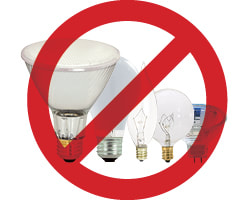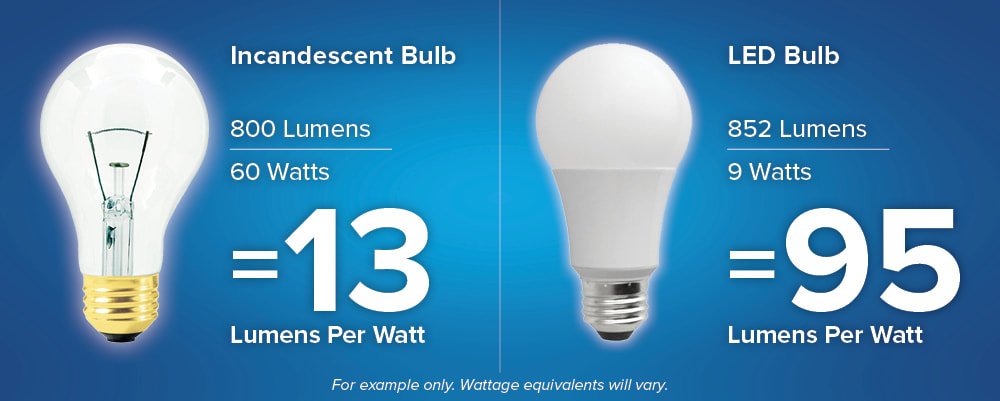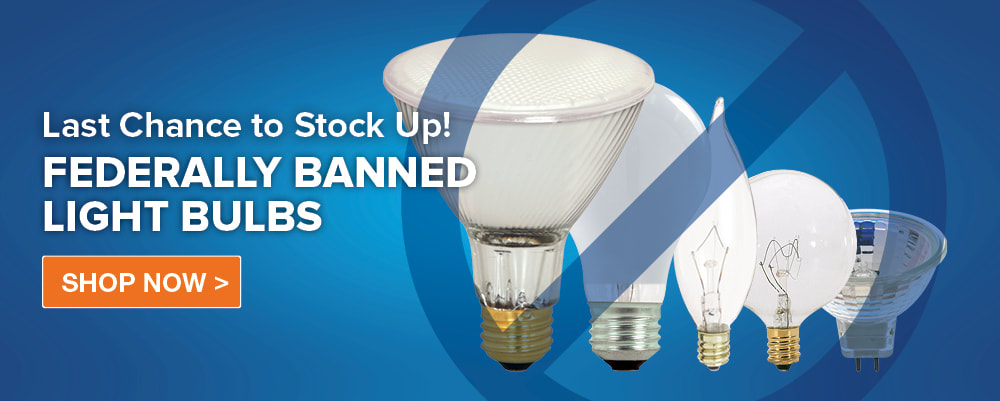 In an ongoing effort to conserve energy, two new rules have been adopted by the United States Department of Energy regarding the definition, production and sales of general service lamps. So what does it all mean and how are you affected? 1. The sale of general service lamps is prohibited after July 31, 2023.Since 2007 when President Bush signed the Energy Independence and Security Act (EISA), we’ve known that incandescent and halogen technologies were being phased out to encourage more energy-efficient options. This act required manufacturers to stop producing certain types of bulbs, however it still allowed retailers to sell their existing inventory. This new rule changes that and prohibits the sale of general service lamps after July 31, 2023. 2. General service lamps must produce a minimum of 45 lumens per watt.This rule expands on the discontinuation of incandescent and halogen technologies and can include certain CFL, fluorescent and even LED bulbs. Lumens measure the brightness of a bulb and watts measure how much electricity is used to achieve that brightness. The amount of lumens per watt is the amount of light produced for every watt of energy consumed. The example below shows a 60 watt incandescent bulb that gives off 800 lumens and a 9 watt LED bulb that gives off 852 lumens. This means these bulbs produce around the same amount of light. The incandescent achieves 800 lumens with 60 watts (13 lumens per watt), while the LED achieves 852 lumens with 9 watts (95 lumens per watt). This is one example that demonstrates how the requirement of 45 lumens per watt will result in exceptional energy savings across the wide range of lighting products used daily in the United States. General service lamps are defined by certain criteria and there are also many exemptions.A general service lamp meets the following criteria:
General service lamps include, but are not limited to:
General service lamps do not include:
A general service incandescent lamp is defined as a standard incandescent or halogen type lamp that is intended for general service applications and:
Why are these changes taking place?It is estimated that the removal of these lighting products will save consumers nearly $3 billion per year on their utility bills, greatly reduce carbon emissions and advance climate goals. Also, since LED bulbs last significantly longer than incandescent and halogen bulbs, sometimes up to 50 times, they will not need to be replaced nearly as often, saving money and maintenance time. What are my options? With Lighting Supply you still have plenty of options. Stock up on hundreds of remaining incandescent and halogen bulbs before the inventory is depleted or the federal cutoff date arrives or shop an enormous selection of energy-efficient LED bulbs. Not sure where to start? Call our friendly customer service team today at 800-609-5790. Resources and Related Articles:
0 Comments
Your comment will be posted after it is approved.
Leave a Reply. |
This blog's content is copyright © 2014-19 Lighting Supply.


